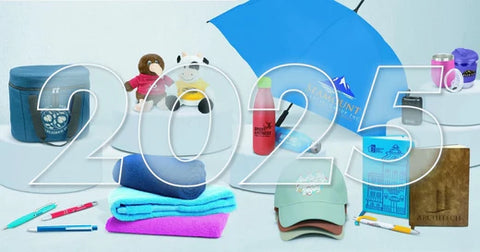Blog / Sales & Marketing / Why Your Business Needs Digital Word-of-Mouth (And How to Get It)
Why Your Business Needs Digital Word-of-Mouth (And How to Get It)

In today’s highly digital world, it’s easy to feel like advertising budgets dictate business success. But there’s one form of marketing that continues to thrive—regardless of how much you spend: word-of-mouth. The best part? You can amplify this incredibly powerful form of marketing through digital channels without breaking the bank.
Word-of-mouth marketing (WOMM) used to be conversations shared over the backyard fence or in social gatherings, but today, digital platforms have supercharged its reach. The key is understanding how to harness the natural tendency of customers to talk about your brand and direct that conversation to digital platforms where it can be amplified.
In this article, we’ll explore how to leverage word-of-mouth marketing through digital channels like social media, review platforms, and email marketing, offering practical strategies that you can implement today to boost your brand’s online presence—without spending a fortune.
How Word-of-Mouth Thrives in the Digital World
Word-of-mouth has gone from private, one-on-one conversations to viral, community-wide discussions thanks to the internet. Social media platforms, forums, online reviews, and even messaging apps provide businesses with more opportunities than ever to get people talking about their brand.
The beauty of digital WOMM is that once customers share their positive experiences online, those conversations can be seen by thousands—or even millions—of people, creating a ripple effect that extends your reach far beyond your core audience.
Let’s break down specific digital channels and strategies you can use to implement WOMM effectively.
1. Social Media: Amplify Conversations with Hashtags and Mentions
Social media is one of the most potent drivers of word-of-mouth marketing today. Customers love sharing their experiences, whether it’s an Instagram post of their new favorite coffee spot or a tweet recommending a product that worked wonders for them.
Here’s how you can tap into that:
Create a Branded Hashtag
Develop a unique, catchy hashtag that your customers can use when they post about your brand. Starbucks, for example, uses #StarbucksRewards to encourage users to share their experiences with the brand’s loyalty program. Make sure your hashtag is easy to remember and incorporate it in your social media posts, product packaging, and customer emails.
Engage and Acknowledge User-Generated Content (UGC)
Encouraging user-generated content is crucial. You can foster this by interacting with posts that mention your brand—like, comment, and even share user posts on your own channels. For example, Glossier frequently reposts customers’ photos on their Instagram account, which not only highlights their fans but also encourages others to share content for a chance to be featured.
Host Contests or Challenges
Create shareable experiences by running a social media contest or challenge. Encourage your followers to participate by posting photos, videos, or stories using your product or service, and reward the most creative entries. This sparks engagement and brings your brand into new circles, as participants share their entries with their own followers. Challenges like Coca-Cola’s #ShareACoke or ALS Ice Bucket Challenge are great examples of viral, word-of-mouth-fueled campaigns.
2. Online Reviews: Build Trust on Review Platforms
Online reviews are the digital form of word-of-mouth recommendations. People trust the opinions of fellow consumers, and glowing reviews can significantly influence buying decisions. According to research, 93% of consumers read online reviews before making a purchase.
Encourage Reviews on Platforms Like Google and Yelp
Make it easy for your customers to leave reviews by providing direct links in follow-up emails or on your website. Offering a small incentive, like a discount on their next purchase or entry into a giveaway, can further encourage participation.
Respond to Reviews—Good and Bad
Acknowledging customer feedback—whether positive or negative—demonstrates that your business values customer input and is committed to constant improvement. Responding to positive reviews builds customer loyalty, while resolving complaints publicly shows potential customers that you take issues seriously.
3. Email Marketing: Encourage Customer Referrals and Testimonials
Your email list is a powerful tool for generating digital word-of-mouth. You’ve already captured your audience’s interest, so why not use that relationship to spark new referrals?
Referral Programs
Create a referral program where current customers can refer friends and earn rewards. For example, Dropbox’s famous referral program offered additional storage space to users who successfully referred others. Send personalized emails to loyal customers, encouraging them to share their love for your brand with a simple referral link.
Request Testimonials or Reviews
Ask happy customers to leave a review or submit a testimonial about their experience. This is especially effective after they’ve made a purchase. Including a quick link in your email makes it easy for them to leave feedback. Once you’ve gathered testimonials, showcase them on your website and social media.
4. Influencers and Micro-Influencers: Extend Reach Authentically
Influencers are trusted figures in the digital world who already have a dedicated following. Partnering with influencers—especially micro-influencers who are typically more affordable—can amplify your word-of-mouth marketing by reaching niche communities.
Find the Right Influencers
Look for influencers who align with your brand values and have an audience that matches your target market. A micro-influencer with 5,000 highly engaged followers in your niche can often deliver more authentic word-of-mouth than a celebrity influencer with millions of disengaged fans.
Collaborate on UGC
Encourage influencers to create genuine, user-generated content by providing them with free products or services to review. Their followers will appreciate the honest recommendations, and the content will feel organic rather than forced, which increases trust in your brand.
5. Leverage Messenger Apps and Forums for Organic Conversations
Customers are increasingly turning to messenger apps like WhatsApp and online communities like Reddit to exchange recommendations with their peers. These channels might seem less obvious, but they are fertile grounds for organic word-of-mouth marketing.
WhatsApp Business for Personalized Conversations
With WhatsApp Business, you can interact directly with your customers, offering personalized product recommendations or assistance. Encouraging customers to share their experience with friends via messaging apps helps you tap into private but powerful conversations.
Engage in Niche Forums and Online Communities
Participating in discussions on platforms like Reddit, Quora, or specialized industry forums can expose your brand to passionate, engaged audiences. Offering genuine advice and helping users solve problems naturally brings attention to your business, sparking word-of-mouth in these communities.
Empower Your Customers to Speak for You
Word-of-mouth marketing is no longer limited to casual conversations—it thrives in today’s digital ecosystem. By leveraging social media, online reviews, email marketing, influencer partnerships, and even messaging apps, you can turn your customers into powerful advocates for your brand, without spending big on ads.
Implementing these digital strategies will not only boost your brand’s visibility but also foster authentic customer relationships that lead to lasting growth. Your customers are your most valuable marketing tool—give them the platforms and encouragement to spread the word, and watch your business thrive.







